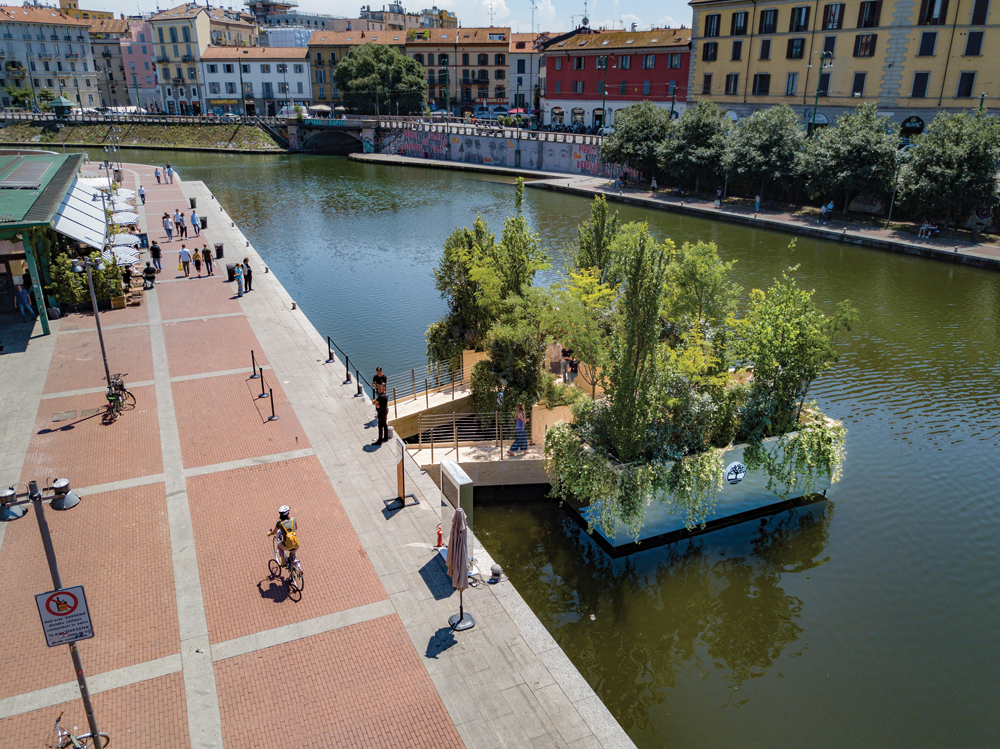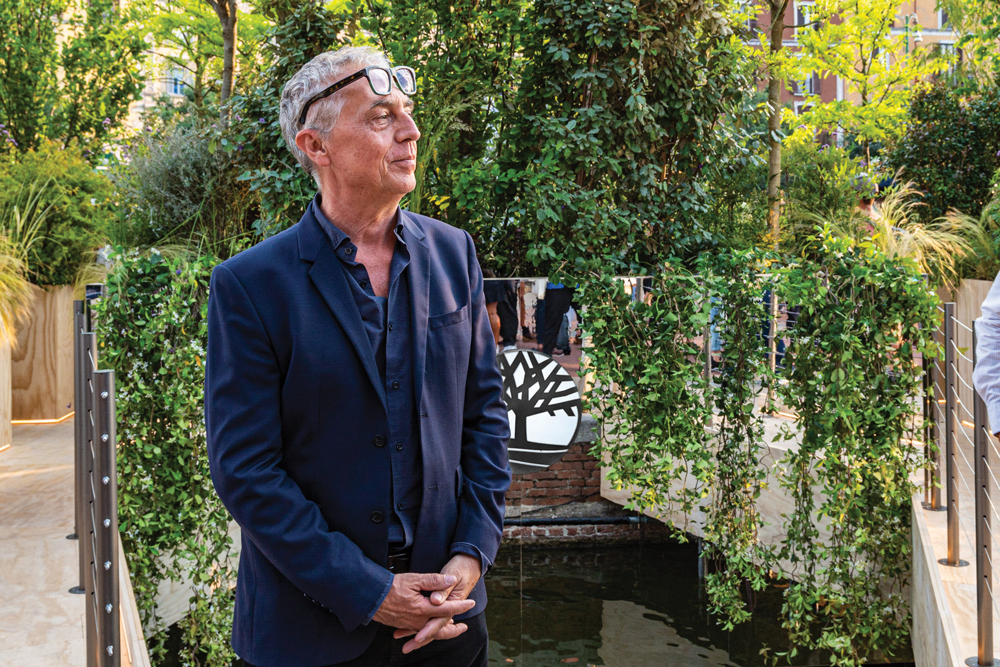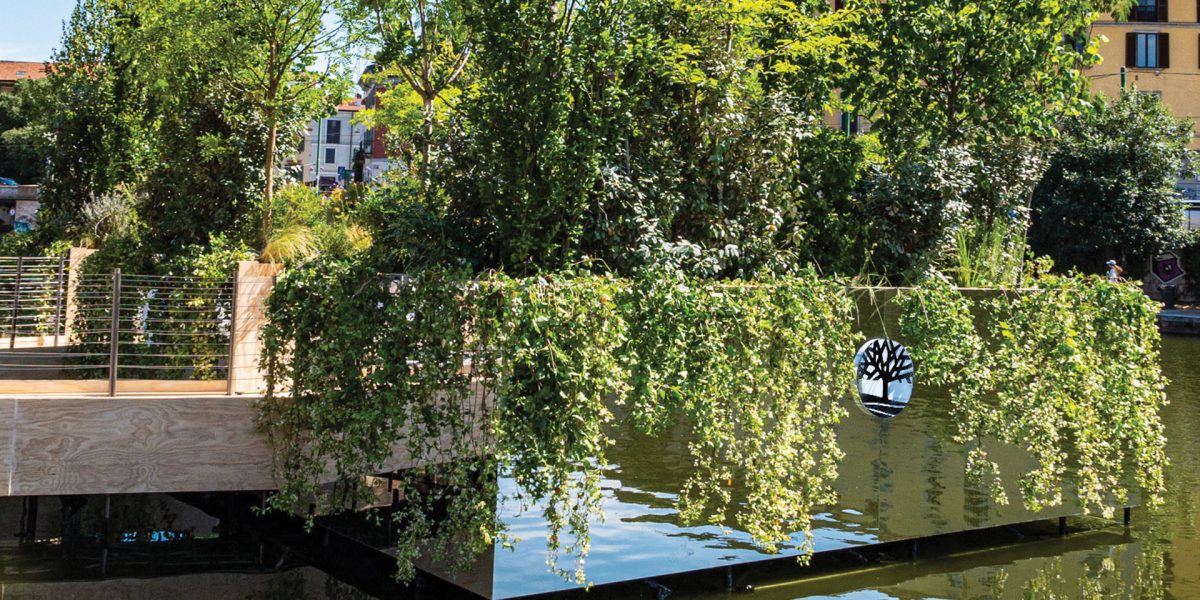The Floating Forest
Combatting the effects of climate change and improving people’s quality of life is a mission that walks hand in hand more often than we think. Sometimes it can be easy to slip into negative attitudes around going green during small selfish moments when our paper straws melt away to nothing while we’re still using them. But for bigger picture stuff, creating a green space or forest within our cities and promoting biodiversity wherever we can will have a positive impact on our day to day life as well as the planets.
With these thoughts in mind, shoe merchant Timberland has developed a new installation for Tortona Design Week. The project has been placed on the waters of the Darsena in Milan and is a living example of how people and the biosphere can come together in harmony in developed areas. It not only promotes the re-greening of urban areas, but also highlights the latest in
eco-innovative products.

As an independent ecosystem of 610 plants and 30 species, it allows for a fully immersive tactile experience. A range of trees, such as Maple, Birch and Apple, will be present, as well as bushes such as the Aronia Berry, Hydrangea, Mahonia and Pittosporum, and perennial grasses such as Stipa, Eulalia, Anemone, Daylily, Purple Verbena and Pampas.
The project also aims to leave a legacy for the city long after its marketing potential has run its course. All the trees that make up the forest will be donated to Soulfood Forestfarms Hub Italia, a nonprofit organisation that facilitates the ecological transition of territories together with local communities, institution and businesses.

Serious regreening efforts would be one of our biggest keys to climate mitigation if undertaken properly. Improved land management could either increase carbon storage or avoid emissions from taking place to begin with. Natural climate solutions could provide over a third of the mitigation needed to keep warming below the target of 2°C. This can be achieved with a mix of different solutions including reforestation, conservation and coastal restoration. On the flipside, man made solutions where we go it alone would have hardly the wide reaching effects. “Mammoth” The world’s largest carbon direct air capture facility is being built with the expectation that it will be completed in the next year or two. When it’s done it will be able to remove 4,000 tons of carbon from the air. Or in other words .0001% of the 36 billion tons of CO₂ we create each year.
We need to do more and we need to have done it yesterday.

